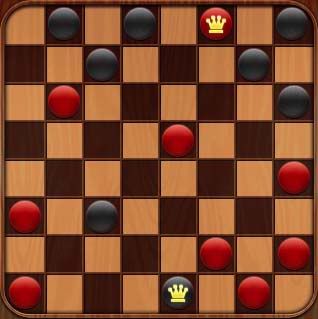Competitive games are so prevalent that we pretty much equate "game" with "competition," while the concept of cooperative games is virtually unknown except in very limited areas (like camps for children, or business team-building exercises/workshops). One of the goals of this site is to rectify this situation. Not only are cooperative games more fun for children, but they engage us at a whole new level, especially as they demand strategy planning with more than one person and more than one set of resources.
There are three basic ways to set up games: independence (where players act separately), competition (where players act against each other) and cooperation (where players act together). Many games, including most team sports, are intra-group cooperative and inter-group competitive (i.e. people cooperate with each other within the group so they can better play against other groups). A cooperative game, as I use the term, is not a game where there is no competition possible whatsoever, but rather a game where some form of cooperation between all the players (inside and outside of teams) is necessary to achieve the stated objective. Likewise, a competitive game is not a game where there is no cooperation whatsoever, but rather a game where it is necessary to compete in order to achieve the objective. Even war, which is the epitome of competition, can involve temporary cooperation between enemies, but it is the exception rather than the rule.
From the game Save the Whales,
available at Child and Nature.
For more on the issue of competition versus cooperation and how cooperation in general is more conducive to motivation, self-esteem and good human relations, see the book No Contest: The Case Against Competition, by Alfie Kohn, which goes through the scientific literature on the subject to show that cooperation is always the superior alternative.
Here are some of the thoughts I have on the issue of cooperative abstract games, and how to provide challenge within them.
As I see it, the main issue with cooperative games is that they lack opponents; this may seem trite, but has some interesting consequences. In a competitive game, the opponent is an intelligence roughly on the same intelligence level as your own (as human beings, as opposed to, say, strategies determined by dice rolls), providing a challenge roughly equal to your abilities. More importantly, it means that the nature of the challenge is ever-changing, since your opponent's actions cannot be predicted. A cooperative game with a fixed objective is more likely to be solveable.
A solved game is a game for which we can either predict who will win given perfect play on both sides, or a game for which we can make an algorithm that ensures a win if used from the beginning of the game, or a game for which we can make an algorithm ensuring a win from any position whatsoever. However, being solveable does not mean that a game is not enjoyable: it all really depends on the complexity of the solution. If a game can be perfecly played by using one or a few simple rules, then it will not have much replay value (think tic-tac-toe). If a game can be perfectly played but the solution is so complicated as to not be practical to remember (think checkers), then it will not affect people's enjoyment of the game. Competitive games that are too simple, and therefore too easily solveable, will not capture our attention regardless of our opponent's skill: the only difference is that the opponent's skill introduces what is, to the perspective of the player he faces, to a certain extent a random or varying element.
Checkers was solved in 2007, despite
having 500 billion billion possible
positions.
J. Mark Thompson, when discussing competitive games on his wonderful site Abstract Games, defines two attributes of games which are relevant here: depth, which is the levels of expertise that one can attain in a game, and clarity, which represents the ease by which one can form judgments about what is a good move and what is a bad move. As Thompson discusses, both attributes are opposed: the clearer a game is, the less deep it is, and vice-versa. An easily solved game is extremely clear, but not very deep. An extremely complex game like Ultima (the Chess variant) is very deep but very unclear, making it hard to play and enjoy. The goal of any designer, presumably, is to attain some balance of both which is satisfying for the game concept. A game for children needs to be clear first and foremost, while a "serious" abstract game can generally get away with a lot more depth, but a game with too much depth (so complex that one can't figure out what to do to achieve some objective) will be tedious, discouraging, and remain unplayed, especially if are too many rules.
There are two main ways I see cooperative games as being able to maintain challenge and replay value: one is complexity, especially complex objectives (which are also needed in competitive games), and the other is randomness or variety (which in the case of, say, chess, would be provided by the opponent). A game like chess is interesting because of the sheer number of possible strategies and, in general, positions on the board (note that this is partially due to the variety of the pieces themselves: if all pieces moved like pawns or queens, Chess wouldn't be nearly as interesting).
One way to cheat would be to oppose the cooperating players to an artificial opponent which is regulated by some random element, such as the throw of a dice, but what would be the point of that? You'd basically be recreating a competitive game, and if you're going to do that, just have an actual opponent play the part. If a cooperative game is to have a random aspect, then one way to do it is to have variants which change the opening positions, such as Metapontum's variants, which include a completely random piece disposition. Such variants shoot up the complexity of Metapontum (just as they do for Chess), and makes it much less solveable. Another way to do it is to introduce a random element which affects the board itself, like Forbidden Island. Yet another way to do it is to make the pieces available through a random draw, like JSCH. Just look through the games on this site for an idea of the variety of ways in which cooperative objectives can be implemented.
The three basic kinds of objectives you will find:
"Is your dance card full?": Position-based objective.
Players must exchange the positions of their pieces (or adopt other, different positions) in order to win. A lot of the time, the challenge comes simply from pieces getting in each other's way. An easy way to make abstract games cooperative.
Examples: Metapontum, Diplomatic Mission, Warp 'n Woof, Yin Yang, Maze
"Twin Powers, Activate!": Piece interaction-based objective.
Of course most cooperative games have some form of this, since they are about players helping each other. But in abstract games the interaction between pieces belonging to different players becomes crucial, and often provide the objective of the game itself.
Examples: Chess in Colour, JSCH, Catalonia
"I have that sinking feeling...": Time-based objective.
Some disaster will occur given enough time, and players must move towards victory while at the same time scrambling to mitigate or prevent that disaster from happening (unless the victory condition is itself to prevent the disaster). In general, the game gets harder to play as time goes by. Especially good for board game themes.
Examples: Pandemic, Forbidden Island
Miscellaneous: Mephisto (relies on a strong random element coupled with point-based movement mechanics)
Another problem is that cooperative games may be seen more like solo games with another player tacked on. People do make comments like "playing this game felt more like solving a puzzle than an actual game." But that's not necessarily a problem: being able to have a game that can be played both solo and cooperatively is a sign of versatility. The problem comes if the players feel unnecessary.
Communication must be necessary in some important way in order to coordinate actions. This not only makes everyone feel needed but draws people into the game. The concept of having people take on different roles can also contribute to that feeling, as long as they are not shoehoerned into them. Being represented on the board (having a separate perspective) is also helpful: a board which is seen exactly the same by everyone will not be conducive to feeling needed as a general rule (cooperative Jenga might be nice but there's no particular reason for more than one person to be there unless they have a different perspective, maybe different goals or something of the sort).

